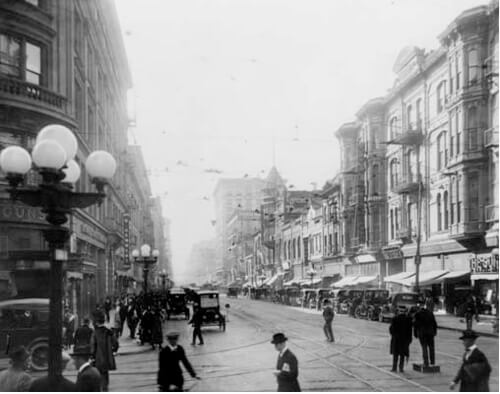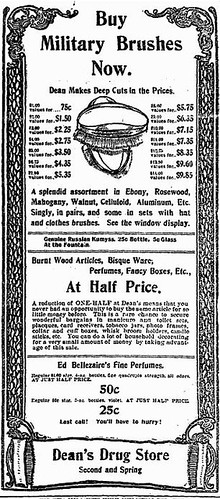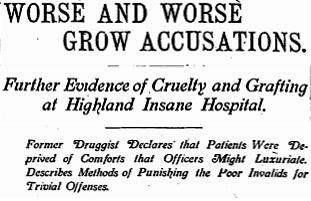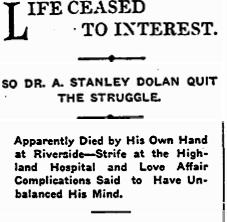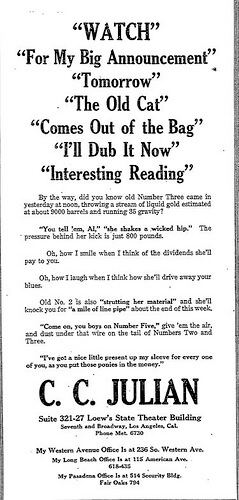A young couple by the name of McCarthy came to Los Angeles in 1890, and quickly made money in the real estate game. As luck would have it, one year later, Mr. McCarthy fell ill and died. His widow, a healthy, handsome woman, was left a well appointed house on Temple street, but she proved unable to overcome her grief at the loss of her husband. She shut herself in her second story parlor, and refused her friends invitations and entreaties to re-enter society. Desperate to console her, they suggested she seek out spiritual support, and referred her to Mrs. Rich, a trance-medium of some local renown. After the widow had been visiting the medium for several weeks, friends noticed a definite change in her behavior. When they called on her in her rooms they found her greatly agitated, crouched down in one corner of her room, clutching paper and pencil, which she used, she explained, to record messages from her dead husband. The messages allegedly emanated from all corners and quarters of the room, and were sometimes delivered by a little girl named “Dewdrop.”
Mrs. McCarthy’s friends tried to calm her, and seemingly succeeded. But soon thereafter the widow disappeared from her house on Temple street. Ten days later a police officer apprehended a raving woman, unsteady on her feet, in a hallway near the corner of Sixth and Main streets. Her face was covered in red welts, and her tongue badly swollen. The officer suspected she was intoxicated, but soon discovered that she was bereft of reason. He was about to take the poor woman to the city prison, when a gentleman happened to recognize her as his neighbor, Mrs. McCarthy. He delivered her to her friends from Temple street, who took her into their home to convalesce. Gradually, she recovered her wits and told them her story.
Mrs. McCarthy had come to believe that if she strictly obeyed Mrs. Rich, the trance medium, in every regard, then she would, in time, be allowed to communicate with her dead husband. At the medium’s instruction, Mrs. McCarthy gave Mrs. Rich all but 300 dollars of her personal fortune. The medium then promptly fled the city with her haul. Distraught, Mrs. McCarthy sought out another clairvoyant, a Mrs. Coy, who plied her trade as a magnetic healer. Mrs. Coy, assisted by an unidentified man, took the half-demented widow into her house, drugged her, and shut her in a dark room for days. They persuaded the widow to write checks for all of her remaining funds, and to give up her fur-trimmed cloak and her fine dress, for only if she were to renounce all wordly possessions, they claimed, would “the spirit of her dead husband see fit to address her.” On her way home to change she was intercepted by the police officer.
Mrs. McCarthy was unable to recover her lost savings. Mrs. Coy claimed it was the widow’s idea to give up her money and her clothing, as she “wanted to do penance,” and that she merely assisted Mrs. McCarthy in her spiritual quest.

